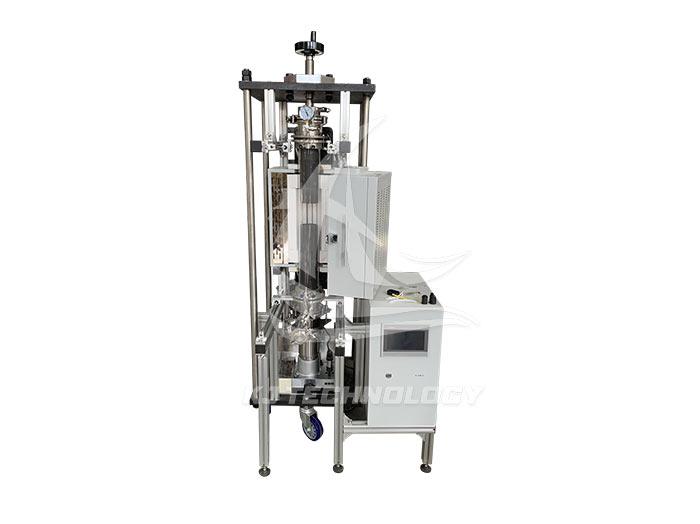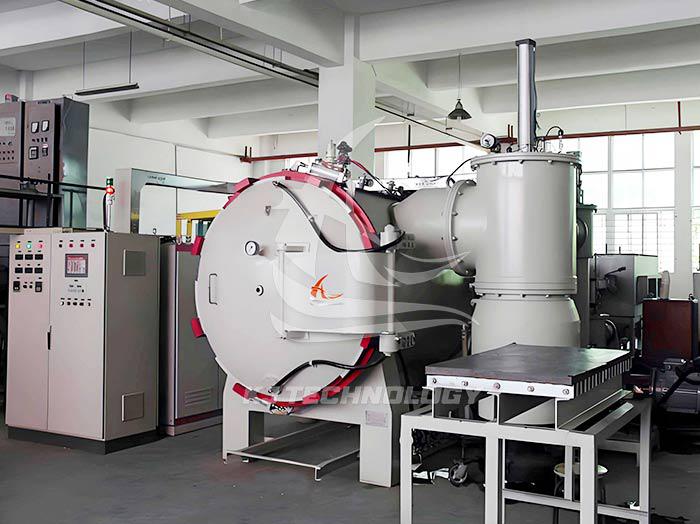Application of High True Air Quenching Furnace in Metal Manufacturing Industry
 11-18-2025 Author: KJ technology
11-18-2025 Author: KJ technology
Application of High True Air Quenching Furnace in Metal Manufacturing Industry
Gaozhen air quenching furnace, with its core advantages of non oxidation, micro deformation, environmental protection and energy saving, and flexible process, has become a key equipment for improving material performance and processing accuracy in the metal manufacturing industry, especially in the high-end manufacturing field, with significant application value. The following analysis will be conducted from three aspects: technical principles, core advantages, and typical application scenarios:
1. Technical principle: synergistic effect of vacuum environment and high-pressure gas quenching
The high vacuum air quenching furnace uses a vacuum system to pump the pressure inside the furnace chamber to ≤ 10 ⁻ Pa, completely isolating oxygen and water vapor to prevent metal materials from oxidizing or decarbonizing at high temperatures. In a vacuum environment, the material is heated to the target temperature (up to 1350 ℃), and then filled with high-pressure inert gas (such as nitrogen, argon, or helium), forming turbulence through a high-speed nozzle to achieve rapid and uniform cooling. Its cooling rate can reach over 100 ℃/s, and the cooling gradient can be precisely controlled by adjusting gas pressure and flow rate to meet the martensitic transformation requirements of different materials.
2. Core advantage: Addressing pain points in the metal manufacturing industry
No oxidation decarburization, excellent surface quality
The vacuum environment eliminates the formation of oxide scale, maintains the surface smoothness of the workpiece, eliminates the need for subsequent pickling or sandblasting processes, and reduces processing costs. For example, 316L stainless steel artificial joints have better corrosion resistance and significantly better biocompatibility than traditional oil quenching processes after non oxidation quenching.
Micro scale deformation control ensures accuracy
The uniform cooling characteristics make the thermal stress distribution of the workpiece balanced, and the deformation of thin-walled parts (such as gear rings) is only one-third of that of salt bath quenching, meeting the requirements of high-precision transmission. When a French company used a dual chamber high-pressure gas quenching furnace to process the gear sleeve of a transmission synchronizer, the average value of tooth distortion decreased and the pass rate increased.
Environmentally friendly and energy-saving, in line with the trend of green manufacturing
Abandon the use of quenching oil, eliminate oil fume pollution and waste liquid discharge, and cooperate with gas recovery systems (such as nitrogen recycling rate>90%) to reduce operating costs by 15% -20%. Advanced equipment achieves precise heating through programmable temperature control systems, reducing energy waste and meeting the low-carbon needs of modern manufacturing.
Flexible craftsmanship and adaptability to diverse materials
By adjusting the gas type (helium has a cooling rate 3-4 times higher than nitrogen), pressure, and flow rate, materials such as structural steel, mold steel, high-speed steel, and titanium alloys can be processed.
3. Typical application scenario: Covering the entire high-end manufacturing chain
Aerospace field
Titanium alloy components, such as aircraft engine blades, landing gear, etc., need to maintain high strength and corrosion resistance at high temperatures. The high fidelity air quenching furnace improves the fatigue life of materials by controlling the precipitation morphology of alpha phase.
High temperature alloy components, such as turbine discs and combustion chambers, undergo solid solution strengthening treatment to eliminate casting segregation defects and significantly improve creep resistance.
Automotive manufacturing field
Precision gears and transmission shafts: Transmission gears require high surface hardness and core toughness. Vacuum low-pressure carburizing combined with high-pressure gas quenching technology can reduce deformation and improve transmission accuracy.
Key components of the engine, such as the turbocharger rotor and valves, need to withstand extreme working conditions. The vacuum high-pressure gas quenching furnace uses a graded quenching process to reduce thermal stress distortion and avoid the risk of cracking.
Medical device field
Stainless steel precision parts, such as artificial joints and surgical instruments, require biocompatibility and surface smoothness. The non oxidizing quenching process can improve corrosion resistance and meet medical grade standards.
Tool and mold manufacturing
Mold steel treatment: H13 steel has better hardness uniformity and extended mold life after vacuum gas quenching.
High speed steel cutting tools: By optimizing airflow circulation and pressure gradient, stress concentration is reduced and tool wear resistance is improved.








